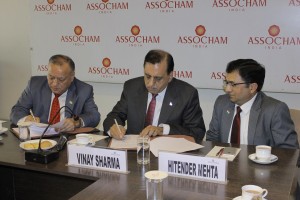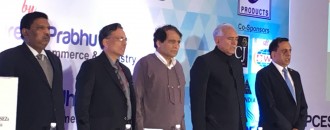.jpg)
CBEC clarifies position on exports under Bond/ LUT
by Ranjeet Mahtani, Sweta Rajan & Suhasini Joshi
Supplies of goods and services to units in Special Economic Zones (“SEZ”) and physical exports are ‘zero rated’ under the Goods and Services Tax (“GST”) regime. The exporters can either (a) supply goods under a Bond or Letter of Undertaking (LUT) without payment of Integrated Goods and Service Tax (IGST) and claim refund of unutilized Input Tax Credit (ITC) or; (b) supply goods on payment of IGST and claim refund of such tax paid on the supplies.
The CBEC had issued a notification[1] and then two circulars[2] clarifying certain procedural and administrative aspects to be complied with by the exporters and field formations. Exporters continued to face various difficulties as also practical hurdles including: (a) doubts as to the eligibility for issuance of LUT instead of Bond (b) Foreign exchange payments for exports to SEZ units etc. Exporters around the country were affected and many reports suggested a slowdown, blockage/ pile-up, non-clarity on the grant of refunds etc. To allay these concerns, the CBEC issued a comprehensive clarification vide Circular No. 5/5/2017 – GST dated August 11, 2017 (“Circular”). The issues faced by exporters, and the manner in which these have been addressed are summarized below:
- Eligibility to export under LUT: In terms of earlier clarifications, the option to export under LUT is available to exporters who were (a) status holders as specified in paragraph 5 of the FTP 2015-20; or (b) had received foreign inward remittances amounting to a minimum of 10% of the export turnover (not less than Rs 1 crore) in the preceding financial year. It was unclear as to whether the criteria of foreign inward remittances having to meet the 10% of the export turnover and the Rs. 1 crore receipts were required to be cumulatively complied with, or whether one of the two would suffice.
It has been clarified that to be eligible to export under LUT, the exporter should have received in the previous financial year, the due foreign inward remittance of Rs. 1 crore or 10% of export turnover, whichever is higher; certain examples have been cited to explain. As a status holder, however, the exporter is eligible for LUT facility whether or not he has satisfied the above-mentioned conditions.
2. Certain procedural aspects for Bond or LUT
- Form for Bond/ LUT: While some Commissionerates were accepting Bonds and LUTs only on stamp paper, others were accepting LUTs on company letterheads. CBEC has clarified that bonds have to be furnished on non-judicial stamp paper and LUTs on the company’s letterhead containing the signature and seal of the authorized person.
- Bank guarantee: Jurisdictional Commissioner is allowed to waive the requirement to furnish a bank guarantee of an amount not exceeding 15% of the bond amount. In terms of the Circular, it has been clarified that exception is given to exporters having a good track record such as exporters registered with the recognized Export Promotion Council subject to their submitting a self- attested copy proof of registration. It is interesting to note that Aphro eCommerce Solutions Pvt. Ltd, a Delhi based-web developer and IT software solutions provider has challenged this requirement by way of writ petition in Delhi High Court.
- Time for acceptance of LUT/Bond: There was uncertainty as to when the LUT/ bond is required to be furnished and accepted by field formations. It has been clarified that LUT/ Bond applications should be processed within a period of three working days from the date of submission of the application along with the requisite documents. It is abundantly clear that this requirement is a pre-requisite for exports including supplies to a SEZ developer or a SEZ unit. The issue that remains is as regards exports which have been completed
- Documents for LUT: Requisite documents as proof of fulfilling the conditions of LUT along with self-declaration shall be accepted unless there is evidence to the contrary. This leaves the Circular vague and prone to discretion and harassment. Examples of such documents include: (a) self-declaration by exporters to establish non-prosecution as prescribed under the Notification 16/2017 - Central tax dated 7th July, 2017 and; (b) a self-attested copy by status-holder exporters who enjoy the facility of LUT to prove their status.
- Jurisdictional officer: Exporters have the option to furnish the bond/ LUT as the case may be to the CGST/ SGST authority till the requisite administrative mechanism is put in place.
- Specific Transactions
- Purchases from manufacturer and Form CT-1: Prior to GST regime, excisable goods could be procured by manufacturers from merchant exporters under Form CT-1 without payment of Central Excise duty. Post GST since the transactions between manufacturers and merchant exporters have been brought within the ambit of “supply”, they are liable to GST.
- Transactions with EOUs: All supplies of goods and/ or services to EOUs are liable to GST and there is no special dispensation for them under GST.
4. Forward inward remittance in INR: Various representations were filed with the CBEC seeking clarification on receipt of proceeds of supplies in INR for exports to Nepal, Bhutan and SEZ developers or units. In this regard, it has been clarified that:
- The proceeds for export of goods to Nepal and Bhutan can be realized in convertible foreign exchange or INR subject to fulfillment of RBI guidelines. However, payments in INR have to be done through a freely convertible Vostro account of a non-resident bank. This is applicable to exports made to SEZ developers/ units.
- The proceeds for export of services to Nepal and Bhutan will have to be realized in convertible foreign exchange
This clarification has been issued in line with Para A (v) Part-I of RBI Master Circular no. 14/2015-16 dated July 1, 2015 (updated as on November 5, 2015).
- Applicability of circulars on Bond/LUTs: Addressing the misunderstanding of some field officers that the instructions of the Circular will be applicable to exports only from the date of issue, the Circular has emphasized that all the instructions will be applicable for exports on or after 1st July, 2017.
These clarifications to some extent have brought in much-needed clarity as regards procedures and compliances pertaining to zero-rated supplies and ensure that ease of doing business does not remain a paper dream. Further, the rules relating to e-way bill issued on 30th August, 2017 will also have to be complied with as regards supplies to SEZ units and developers.
[1] Notification No. 16/2017 – GST dated 7th July, 2017
[2] Circular No. 2/2/2017 – GST dated 5th July, 2017 and Circular No. 4/4/2017 – GST dated 7th July, 2017









 to success.
to success.